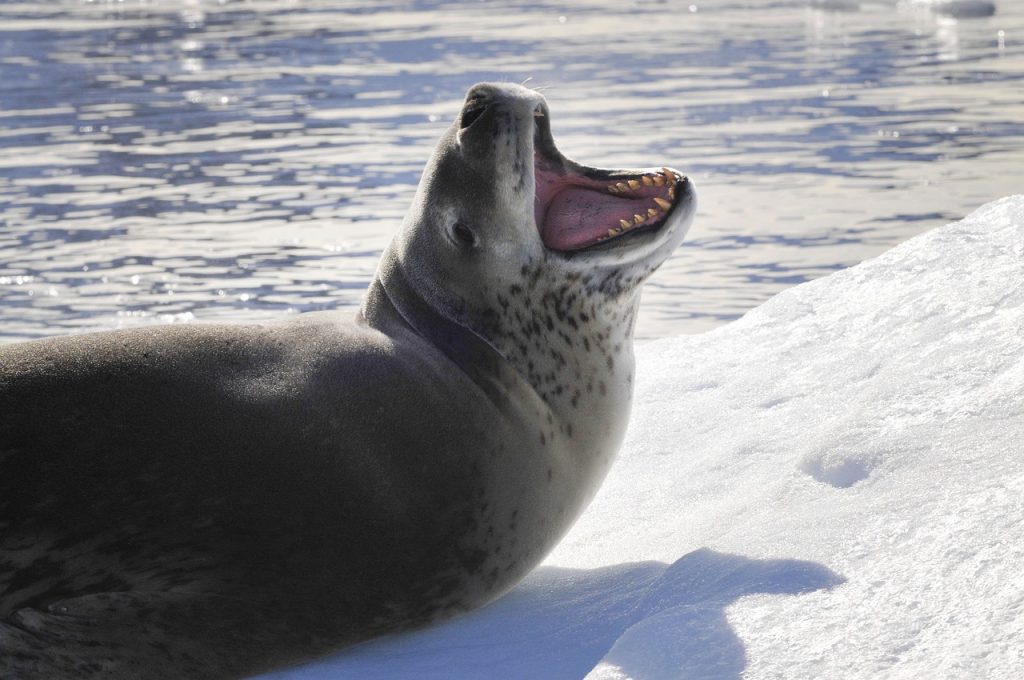June 17, 2019
Leopard Seals: What It Means to Be a Resident of New Zealand

By: burgundy bug
Leopard Seal photo courtesy of Pixabay
Source: Leopard Seal | jodeng
It’s been nearly one month since leopard seals became the latest “residents of New Zealand” – but what exactly does that mean?
Resident Species
Albeit truthful, calling leopard seals “residents of New Zealand” is a wee bit misleading. They’ve actually been reclassified as a “resident species.”
Prior to The New Zealand Department of Conservation’s Marine Mammal Threat Report in May, leopard seals were considered a “vagrant species” in NZ.
What Are Vagrant Species?
Vagrancy is a biological phenomenon in which a species appears outside of it’s typical geographical zone, according to Biology Wise.
Leopard Seals and Vagrancy
Leopard Seals are not from New Zealand. They are an arctic animal that inhabit the edges of the Antarctic Peninsula, the National Oceanic and Atmospheric Administration reports.
Why Leopard Seals Are in New Zealand
“During autumn and winter, [leopard seals] disperse northward throughout the Southern Ocean, sometimes visiting New Zealand. Some animals have been known to spend a year or more continuously in New Zealand waters.”
The New Zealand Department of Conservation
Furthermore, The New Zealand Department of Conservation says that Auckland and Campbell islands have leopard seals year round.
How Leopard Seals Became a Resident Species of New Zealand
Leopard Seals in Antarctica
Source: Leopard Seals Play and Hunt in Antarctica | National Geographic
“The leopard seal has been considered a Non-resident Native – Vagrant taxon in successive NZTCS assessments,” The New Zealand Department of Conservation wrote in their report last month.
“Analysis of leopard seal records shows that this species maintains a constant presence in New Zealand, albeit in relatively low numbers, and therefore should be considered resident here.”
The New Zealand Department of Conservation
Although this reclassification now protects them under the Marine Mammal Protection Act of 1978, they aren’t thought to be facing imminent extinction, the report says.
“There is no evidence of an established breeding population in New Zealand and the animals here are only a small proportion of a much larger population in Antarctic waters,” The New Zealand Department of Conservation wrote. “The low abundance of animals here is simply a reflection of the fact that New Zealand is not within the core range for the species.”
Cetacean biologist with NZ’s National Institute of Water (NIW), Dr. Krista Hupman, said this reclassification is a huge step forward for leopard seals in a press release published by Environment News Services (ENS).
Alongside fellow researcher Dr. Ingrid Visser, they established a non profit organization for spreading more information about the species called “LeopardSeals.org“
Hupman also created the 0800 LEOPARD hotline to report public leopard seal sightings. So far, this hotline has identified 216 seals that have visited the coast of NZ. 74 of these sightings were in 2018 alone.
“Our next challenge is to understand their role in our ecosystem and to educate people about this magnificent addition to our whanau,” Hupman said.
Under this reclassification, it is now an offense to disturb, harm, injure, or kill a leopard seal. You are responsible if your pet poses any threat to these seals, too.
Anyone charged with a Marine Mammal Protection Act violation faces a penalty of up to two years of imprisonment or a fine with a maximum of $250,000, according to LeopardSeals.org.
Interested in having content featured in an upcoming blog post or issue of The Burgundy Zine? Head on over to the submissions page!
For all other inquiries, please fulfill a contact form.


